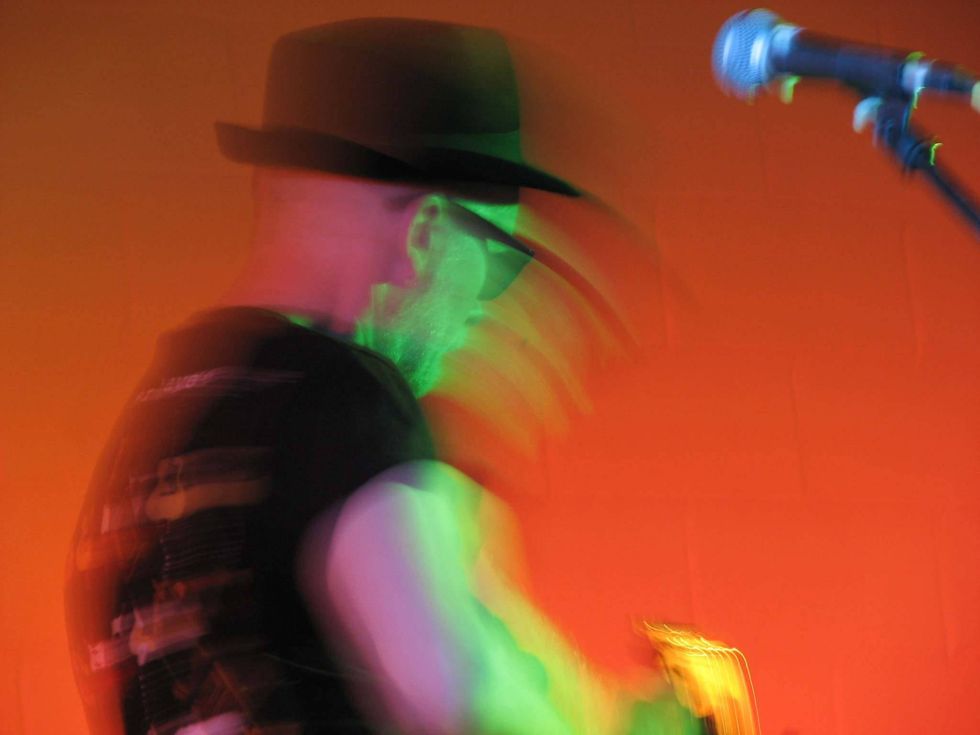Guitar tone is a balancing act, so all the various components that make up an electric-guitar rig should be considered carefully. You want your end result to be a unique and expressive tone that lets you play and create music freely! This month, I’ll touch on guitars, pickups, pedals, and amps, and how all these elements—when chosen carefully—can come together to create a balanced tone.
The guitar. First thing first: your instrument. Guitars are made with different woods, and all the wood—neck, fretboard, or body—contributes to tone. I recommend having a good, basic knowledge of the tonal properties of woods commonly used in guitar construction.
If we look at a sampling of classic, revered guitar designs, we can see how various combinations of woods play a huge role in the overall tonal balance. The Gibson Les Paul, with its mahogany body and carved-maple top, is a great example. The mahogany contributes rich, warm mids and the maple top brings clear, tight lows and brightness. Most Les Pauls feature a mahogany neck and rosewood fretboard, and overall, this makes for a warmer, darker tone. But some Pauls feature an ebony fretboard, which adds brightness and a fast attack. Many ’70s Les Pauls had maple necks and some even had maple fretboards. As you’d expect, these guitars are generally brighter instruments and can be great for heavy, distorted tones. (Think Adam Jones from Tool.)
Amps and pedals. Which amplifier and pedals work for you depends on myriad factors. Making tonal balance a primary consideration by matching your guitar with complimentary pedals and a great amp is always a good idea. For example, Jimi Hendrix is the most famous player associated with a Strat, a guitar known for its bright, bell-like tones. Jimi also primarily played through Marshall amps, known for their bright, penetrating tone (especially when turned up loud). The combination of a Stratocaster with a bright amp might have been a bit much, but Jimi commonly employed a Fuzz Face pedal. This definitely thickened the tone and rounded the harsh treble edge. He also used long, curly guitar cables that undoubtedly had a darkening effect on the overall tone because of the capacitance they add to the signal. Jimi achieved a balance and ended up with a classic tone for the ages.
Eddie Van Halen is another player known for using the classic 4-input Marshall plexi. He was also a fan of the Stratocaster design, but was never one to employ a fuzz pedal. I recall an interview Eddie did in the late ’70s where he spoke about the tonal struggles he had with single-coils. Of course, Eddie famously loaded a powerful humbucking pickup into his Strat-style guitars, making tonal history. See where I’m going with this? Both players got their brightness and clarity from the Marshall amp/Fender Strat combo, but they achieved overall tonal balance in very different ways.
classic tone for the ages.
Combination magic. When you combine the right pedals with the right amp, the results can be pure tonal magic. Take for instance a Fender blackface paired with an Ibanez Tube Screamer, famously used by Stevie Ray Vaughn. The blackface amps generally have a somewhat scooped tone with big bass and lots of top end, while the Ibanez Tube Screamer has forward, pronounced mids and limited bass. The two go together like good red wine and chocolate.
The combination of a Vox AC30’s “normal” channel and a treble booster has been used to great effect by Brian May, and occasionally by Ritchie Blackmore. Though the AC30’s normal channel can be a rather dark, neutral-sounding affair, it can be magic when paired with a Rangemaster or similar type of treble booster. Many modern distortion pedals with lots of bass and presence (such as the Carl Martin Plexitone) also work well with an AC30’s normal channel. The balance of a neutral, clean sound with full mids that’s paired with an aggressive pedal with big bass and searing top end makes for an epic tone.
Let’s not forget about a Marshall amp combined with an analog or tape-type delay unit. Yes, delay or echo into the front end of an amp can be problematic: The dirtier the amp gets, the more washed out and distorted the delay repeats become. But Jimmy Page regularly used the classic Echoplex into a fairly distorted Marshall amp, as did Eddie Van Halen. The trick is that the delay repeats must be warm and dark, which is precisely the character of analog or tape-style delay units. When the delay starts off somewhat dark and degrades with each repeat, it doesn’t overwhelm the tone like a pristine digital delay can. Set the amp for just enough gain and drive, blend in some echo, and you can achieve a wonderful balance.
Any one component in a guitar rig can create a tonal imbalance. Whether you find your tone is too bright and thin or too dark and wooly, take an inventory of your entire rig and see if you can identify the issue. If you choose the components in your rig carefully, you should end up with a core tone that strikes a perfect balance. Until next month, I wish you great tone!



















